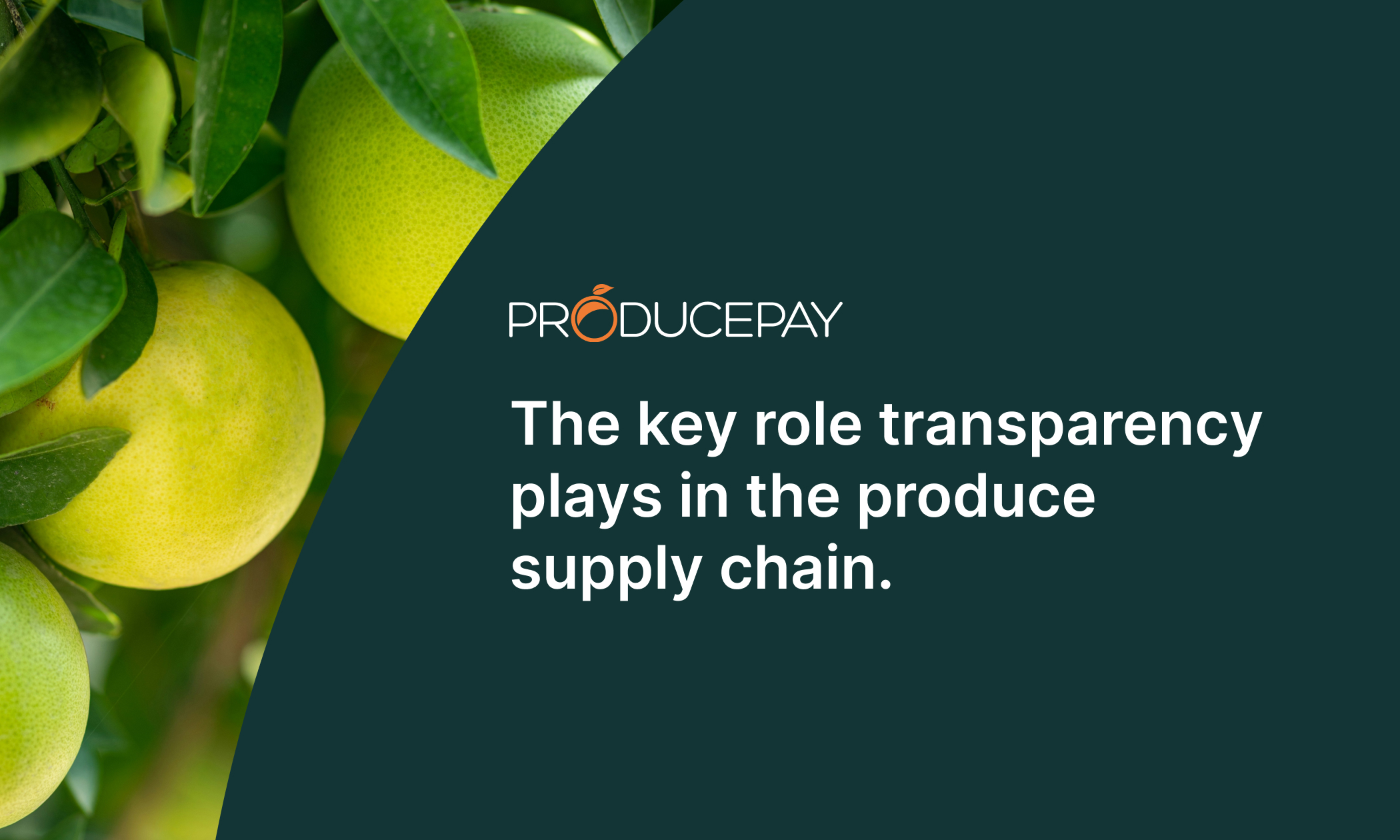
The key role transparency plays in the produce supply chain
Transparency is crucial for ensuring the integrity and safety of fresh produce supply chains. Introducing visibility helps fight the industry’s notorious unpredictability and empowers agribusinesses to enhance efficiency, maintain consumer trust, and deliver higher-quality produce.
Consumers increasingly demand greater transparency within supply chains, with many willing to pay more for products from companies that offer it. This underscores the importance of produce companies pursuing more transparent supply chains through predictable commerce.
Why Does the Produce Supply Chain Lack Transparency?
Achieving supply chain transparency entails knowing how produce is grown, the labor practices involved, and its journey from farms to shelves.
However, achieving transparency is challenging, given the industry’s multifaceted nature. Produce goes through several stages, including post-harvest treatment, packing, cold storage, and freight. Shipments often travel long distances, crossing international borders and passing through several intermediaries before reaching retailers. As chains expand globally, their complexity increases, making transparency even more challenging, particularly with the lack of real-time data tracking.
Furthermore, several variables can compromise produce quality and safety, from microbial or chemical contamination to extended travel times due to adverse weather conditions, blocked roads or congested seaports, and inadequate freight or packing methods.
Consequences of Transparency Gaps
The opacity of the produce supply chain affects consumers and businesses in various ways:
- Consumer health risks: Poor-quality or improperly handled produce can pose serious health concerns to consumers and spread diseases. Recent incidents, such as the Salmonella outbreak in North America linked to cantaloupes, highlight the sensitivity of food safety in the produce supply chain.
- Produce recalls and financial losses: Non-compliant produce often leads to recalls, which cause companies financial losses from the cost of wasted food, lost sales revenue, and potential lawsuits if any consumers are harmed.
- Shortages and delays: Lack of transparency can lead to shortages when too much produce is compromised in recalls. It can also create delivery delays or exacerbate existing delays.
- Loss of trust and reputation: Bad news spreads quickly. When a company faces adverse events such as disease outbreaks, it impacts its reputation and leads to a loss of trust among consumers and trading partners.
Enhanced Visibility and Collaboration
In an ideal scenario, every step of the supply chain is visible, from the field to the shelf. Enhanced visibility enables traceability, which is indispensable for identifying food safety risks, facilitating responses to illness outbreaks, and ensuring compliance with regulations.
Collaboration is vital for enhancing transparency. By fostering partnerships among growers, distributors, and retailers, stakeholders can be aware of what happens at every stage and address common challenges together, strengthening the integrity of the supply chain. The Continental Alliance promoted by IICA is a clear example of how a partnership contributes to addressing food security challenges in the Americas.
Implementing strategies that mitigate volatility can also enhance supply chain resilience and make businesses more responsive to disruptions.
How ProducePay is Creating Unprecedented Transparency
At ProducePay, we are on a mission to provide greater predictability to produce buyers through our technology, capital, global network, and team of expert agronomists.
We partner with the world’s leading integrated suppliers and retailers to build Predictable Commerce Programs that integrate the entire supply chain. This creates a stable 52-week supply through our extensive network of sustainable growers. Our programs empower growers and suppliers with strategic capital to thrive. By aligning buyer demand with grower supply and establishing integrated visibility*, we create unprecedented transparency within the supply chain that significantly reduces waste and minimizes disruptions.
*Our comprehensive Visibility solution is built on critical features that create unprecedented visibility into the supply chain. Our on-site agronomists perform rigorous quality checks and detailed pallet-level inspections at the farm before shipping; in-depth order tracking provides critical data in real time, including location, temperature and humidity; our custom-built comprehensive dashboard brings together all critical order details and streamlines order management, communication and performance evaluation – ensuring the delivery of high-quality produce in full, on spec and on time.
Sources: FSQA Newsletter, HBR, IBM, Ciriec

